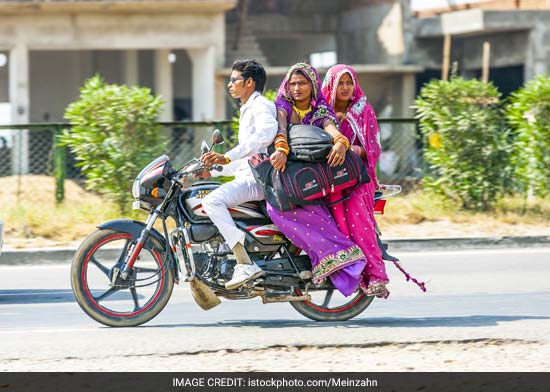
Dangerous Roads: How India Compares To The World
Road accidents are a leading cause of death and severe injuries around the globe. More than 12 lakh people die on the world’s roads each year, something which costs governments around three per cent of their GDP, according to estimates made in the World Health Organisation’s (WHO) Global Status Report on Road Safety 2015.
Interestingly, most of these deaths are concentrated in middle and low-income countries with India being the global leader in terms of road accident-related fatalities. Data released by the Ministry of Road Transport and Highways said that 1,46,000 people had died in the country in 2015. In other words, approximately 12 per cent of the world’s road fatalities happen on India’s roads.
Also Read: How Dangerous Are India’s Roads?
A Disproportionate Burden
Most of the world’s fatalities happen in lower and middle-income countries. While collectively accounting for 82 per cent of the world’s population, the number of road deaths in these countries is disproportionate to the levels of motorisation. The WHO estimates that these countries account for only 54 per cent of the world’s registered vehicles.

It is worth noting that international road death figures have largely stagnated since 2007 in spite of a 4 per cent increase in population and a 16 per cent increase in registered motor vehicles. However, defying this global trend, 57 low and middle-income countries, including India, have actually seen a rise in these figures, suggesting that the problems being faced by this group may be similar in nature.
The biggest reason for the high rate of road fatalities is attributed to the blend of rapid motorisation, inadequate infrastructure and ineffective legislation and enforcement. WHO identifies some key areas of concern, this includes — laws on key behavioural risk factors which do not meet the best practices in most countries, speed management being notably poor, vehicles that are being sold do not meet safety standards and roads being built do not account for the needs of the most vulnerable road users (pedestrians, cyclists, etc.).
Here is how India stacks up against the other 9 most populated countries in the world, in terms of adopting best legislative practices when it comes to road safety:

The only area where India’s laws meet the global standards is that pertaining to seat belts. Fellow BRICS members fare much better with Brazil meeting standards for drink driving, helmets, seat belts and child restraints, China meeting drink driving and seat belt standards and Russia having good legislation on helmets, seat belts and child restraints. Interestingly, even the United States does not meet the WHO’s norms in terms of road safety legislation.
According to the SaveLIFE Foundation, the reason that India fails to meet WHO standards is because existing drinking laws do not differentiate between limits for the general population and young drivers and helmet laws which are set out in the Motor Vehicles Act 1988 do not specify the need for these helmets to be fastened. Additionally, Indian law does not mention child restraints.
Also Read: Wearing Helmets – A Choice Between Life And Death
In terms of enforcement of the laws that do exist, the WHO gives India a rather poor score.

Ignoring The Road’s Most Vulnerable
Around half of the road accident deaths that occur around the world involve the most vulnerable road users—pedestrians, cyclists, and motorcyclists. The WHO report states, “Making walking and cycling safer is critical to reducing the number of road traffic deaths and is important for achieving the Decade of Action for Road Safety’s aim to promote non-motorised forms of transport.”
However, road planning and design in India mostly fails to take into consideration the needs of these users. Provisions for pedestrians either do not exist and even if they do, they are inadequate and unsafe. While two-wheelers make up approximately 76 per cent of urban traffic, no effort is made to segregate these from bigger vehicles.
Also Read: Road Design: What India’s Urban Centres Can Do To Improve Road Safety

The WHO identifies successful speed management as something critical to ensuring road safety and prescribes that the best practice on urban speed management should include a maximum speed limit of 50 km/hour in urban areas with local authorities being given the power to reduce this limit to suit real-time conditions. However, only 47 countries meet this criterion.
While local authorities in India have the power to reduce and set speed limits, there is no overarching national speed limit.
Other BRICS countries do not fare well in this aspect too, with all of them having either no prescribed national urban speed limit or limits that cross the WHO’s 50 km/hour cap. Even Brazil which meets WHO standards for drink driving, helmets, seat belts and child restraints, does not do well in this area.
Also Read: What India Can Learn From Other Countries
Conclusion
While India is not the only country that fares badly in terms of road safety, there are some obvious gaps that need to be addressed in terms of legislation, enforcement, user inclusiveness and design. However, many countries (notably in Europe) despite having higher per capita rates of motorisation have managed to make their roads drastically safer. Learning from these examples, if India were to take a multi-pronged approach to address all these weaknesses and improve safety standards, it could too see a drop in its road accidents, deaths and injuries figures in the future.
The pending Motor Vehicles (Amendment) Bill, if passed, will bring India up to the WHO best policy practice for helmets and child restraints. However, it does not prescribe a national urban speed limit or differentiate between blood alcohol levels for young people and the general population, which means that the legislative framework will still not match up to the best standards.
Read More: How Effective Will The Motor Vehicles (Amendment) Bill Be In Making Indian Roads Safer?


















